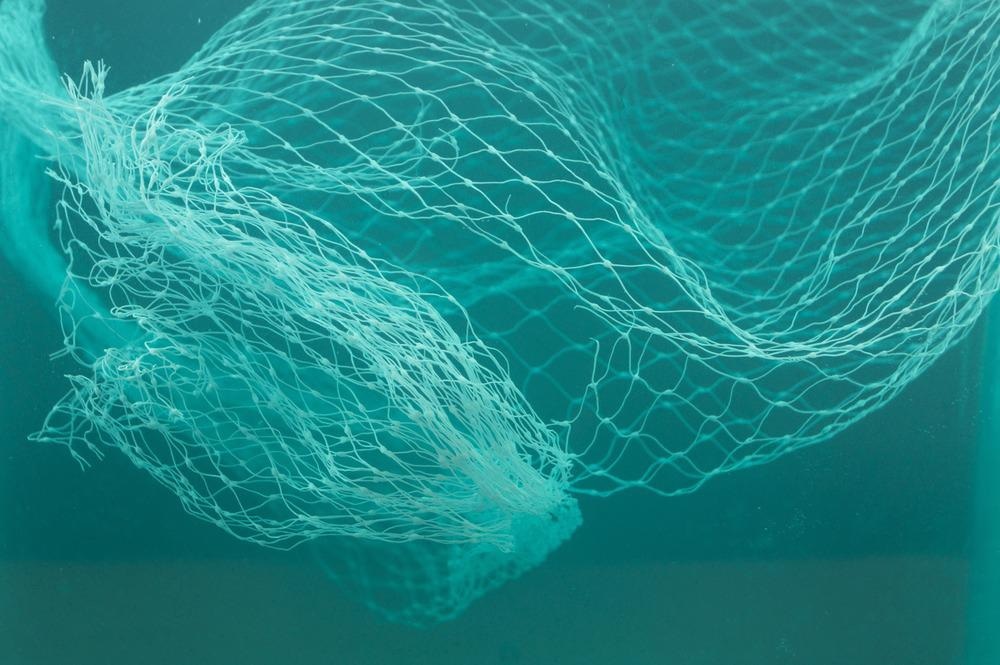Much of the trash in the ocean originates from single-use goods, including food wrappers and microbeads that end up in the water by accident. However, a rising percentage comes from plastics designed specifically for degradation in marine settings; a unique method of designing materials for the marine environment has taken into account the metabolism of bacteria in the environment where they will biodegrade, led by UC Santa Barbara marine microbiologist Alyson Santoro.

Research Proposal: Next Generation Biomaterials with Engineered Biodegradability to Enable Networked Swarm Sensing in the Ocean. Image Credit: Rein Jongelie/Shutterstock.com
Ocean observation is being revolutionized by disposable, networked, free-drifting devices, yet these rising fleets of sensors pose an environmental issue and necessitate a shift in how people approach materials in everyday use.
Marine Biodegradable Polymers
‘Marine Degradable’ typically refers to a material's capacity to biodegrade entirely in a specific timeframe within ocean environmental circumstances such as in an aerobic ocean environment or anaerobic marine sediments, leaving no harmful compounds or residue (no ecotoxicity).
The capacity of a polymeric substance to be broken down by bacteria in the surrounding environment is referred to as "biodegradability." Because the number, diversity, and microbial activity, as well as ambient variables, vary in nature, so will the particular microbial degradation at a given location and time.
Testing Marine Bioplastic
The research conducted by UC Santa Barbara will create and test marine bioplastics, which are materials that have been developed to disintegrate in water. Many so-called biodegradable polymers are really engineered to decompose in industrial composting installations on the ground.
Heat and anoxic conditions help microorganisms decompose in these facilities, which is a far cry from the chilly, high-pressure conditions of the ocean. The award-winning study used DNA sequencing to determine which bacteria in the water already had the potential to digest certain plastics, to find out what metabolites certain materials lack, and what we might be able to add to them to help them deteriorate faster.
The live bacteria will be implanted in the biodegradable polymer polyhydroxyalkanoate, an organic polyester, to generate a plastic that will be consumed from the inside out over time.
This will necessitate not just knowledge of marine bacterial DNA, but also skills in the design of oceanography sensors and experience with 3D printing living bacterial cells. The researchers’ understanding of marine debris and Mango Materials' biopolymer development and manufacturing contribute to this collaborative endeavor.
New polymers with biodegradable qualities present new potential, but also concerns, according to the European Commission's European Plastics Strategy.
The significance of avoiding the use of biodegradable plastics as a remedy to littering was stressed. Biodegradable polymeric alternative options may be the only remedy from a material standpoint for some implementations where the unplanned loss of plastic to the environment is inherent to its use (e.g., fishing equipment, boating equipment, and beach hospitality items) or which are susceptible to unavoidable input and thus are constantly introduced to the surroundings.
Materials that Can Disintegrate in the Marine Environment
Most "biodegradable" plastics currently have poor biodegradation in cold, dark marine settings and have only been created and tested in commercial composting facilities. This initiative will provide environmentally friendly products as well as testing standards that appropriately represent ocean conditions.
Why 99% of ocean plastic pollution is "missing"
Video Credit: VOX/Youtube.com
The successful creation of materials that disintegrate quickly in seawater is predicted to alter several marine industries, including fisheries, and pervade other industry applications where plastic pollution is a key problem.
Degrading Marine Bacteria
By establishing ways for prolonging the life of living cells in printed materials, the research by marine biologist Alyson Santoro became the first to incorporate live PHA-degrading marine bacteria straight into plastic materials. The program's field-deployable respiratory chamber is planned to create a new market standard for evaluating substances used in the maritime environment.
Materials that allow maritime equipment to degrade quickly under realistic environmental circumstances might revolutionize society's capacity to deploy swarm sensors at scale.
The engagement of stakeholders who manage marine waste and end-users, as well as the confluence of intellectually disparate disciplines and techniques, will be required to tackle the issue of marine plastic pollution. The research team will develop, test, and integrate biomaterials that degrade quickly under marine environments at the end of their useful lives.
Producing Blue Diesel from Marine Plastics with Hydrothermal Liquefaction
By 3D printing living bacteria into the bio-based polyhydroxyalkanoate (PHA) and optimizing it with additives to enhance microbial metabolism, the project will generate a portfolio of innovative plastic materials specifically designed for the marine ecosystem.
This would make a chamber for directly detecting the breathing of plastic materials in deep ocean conditions by modifying existing marine instruments. Finally, the research team will collaborate with end-users to develop goods that will be used in a maritime setting. The project's main goal is to incorporate environmentally friendly materials into oceanographic equipment applications.
The wide range of situations in which biodegradation experiments were conducted demonstrated a wide range of rates of biodegradation of biodegradable plastics under marine circumstances and the ambiguity of the term "marine biodegradable." The precise half-lives ranged from weeks to years, providing a detailed picture of the spectrum of the real-world performance of biodegradable polymers in the open environment.
References:
National Science Foundation. (n.d.). NSF Award Search: Award # 2137561 - NSF Convergence Accelerator Track E: Next Generation Biomaterials with Engineered Biodegradability to Enable Networked Swarm Sensing in the Ocean. NSF Convergence Accelerator Track E: Next Generation Biomaterials with Engineered Biodegradability to Enable Networked Swarm Sensing in the Ocean. https://www.nsf.gov/awardsearch/showAward?AWD_ID=2137561
Lott, C., et al. (2021). Half-Life of Biodegradable Plastics in the Marine Environment Depends on Material, Habitat, and Climate Zone. Published 06 May 2021. https://doi.org/10.3389/fmars.2021.662074
Fernandez, S. (2021). Made to Degrade. https://www.news.ucsb.edu/2021/020452/made-degrad
Disclaimer: The views expressed here are those of the author expressed in their private capacity and do not necessarily represent the views of AZoM.com Limited T/A AZoNetwork the owner and operator of this website. This disclaimer forms part of the Terms and conditions of use of this website.